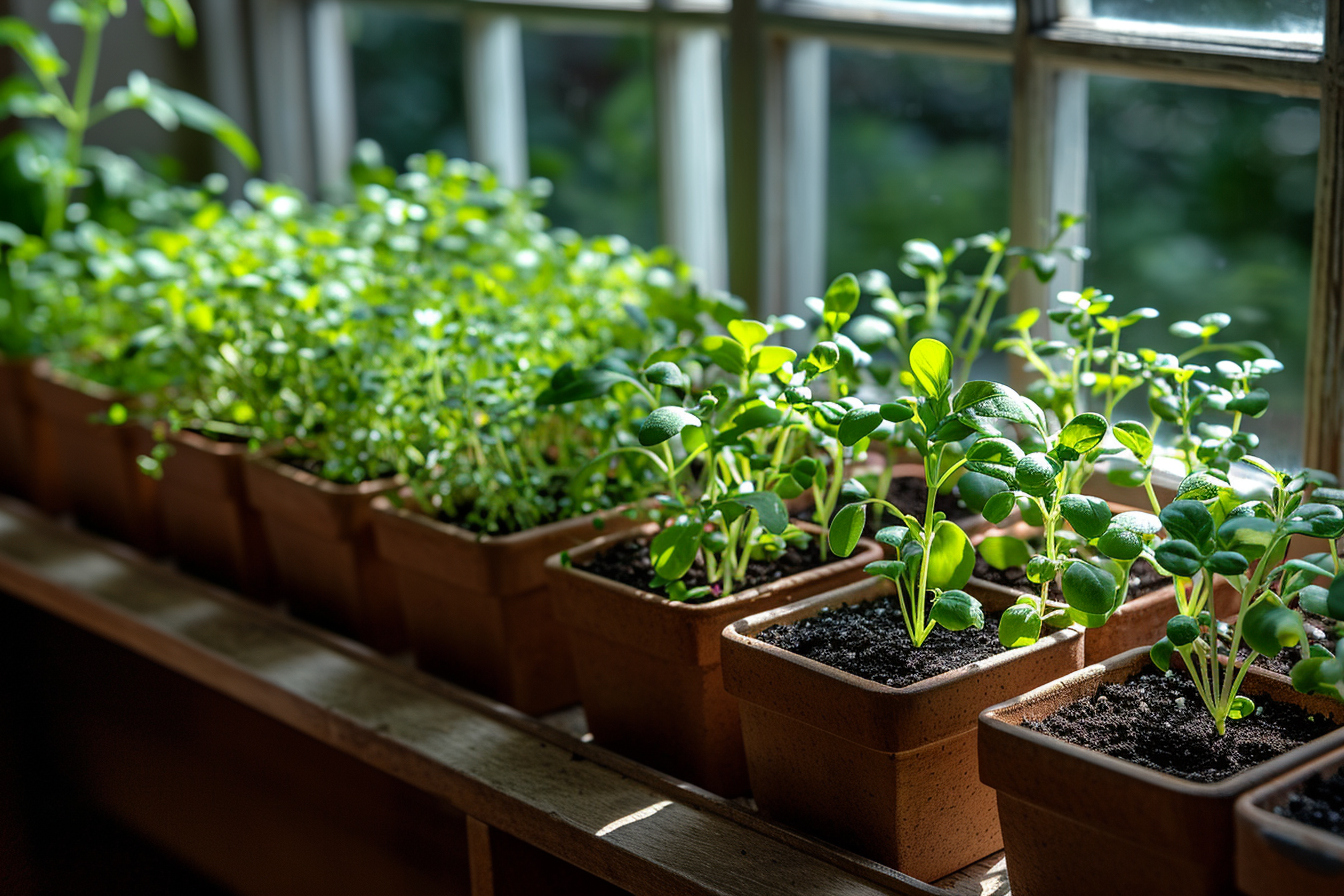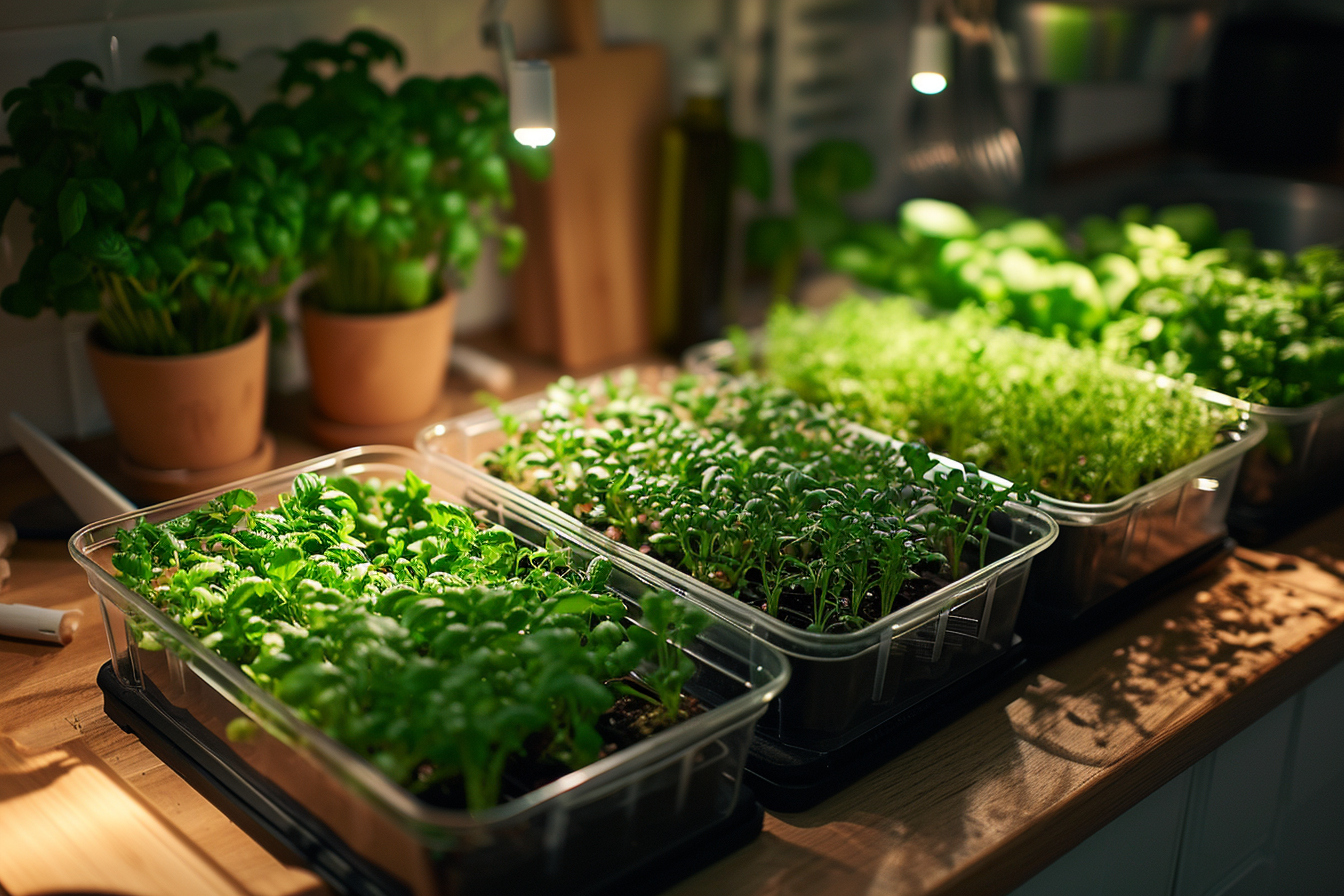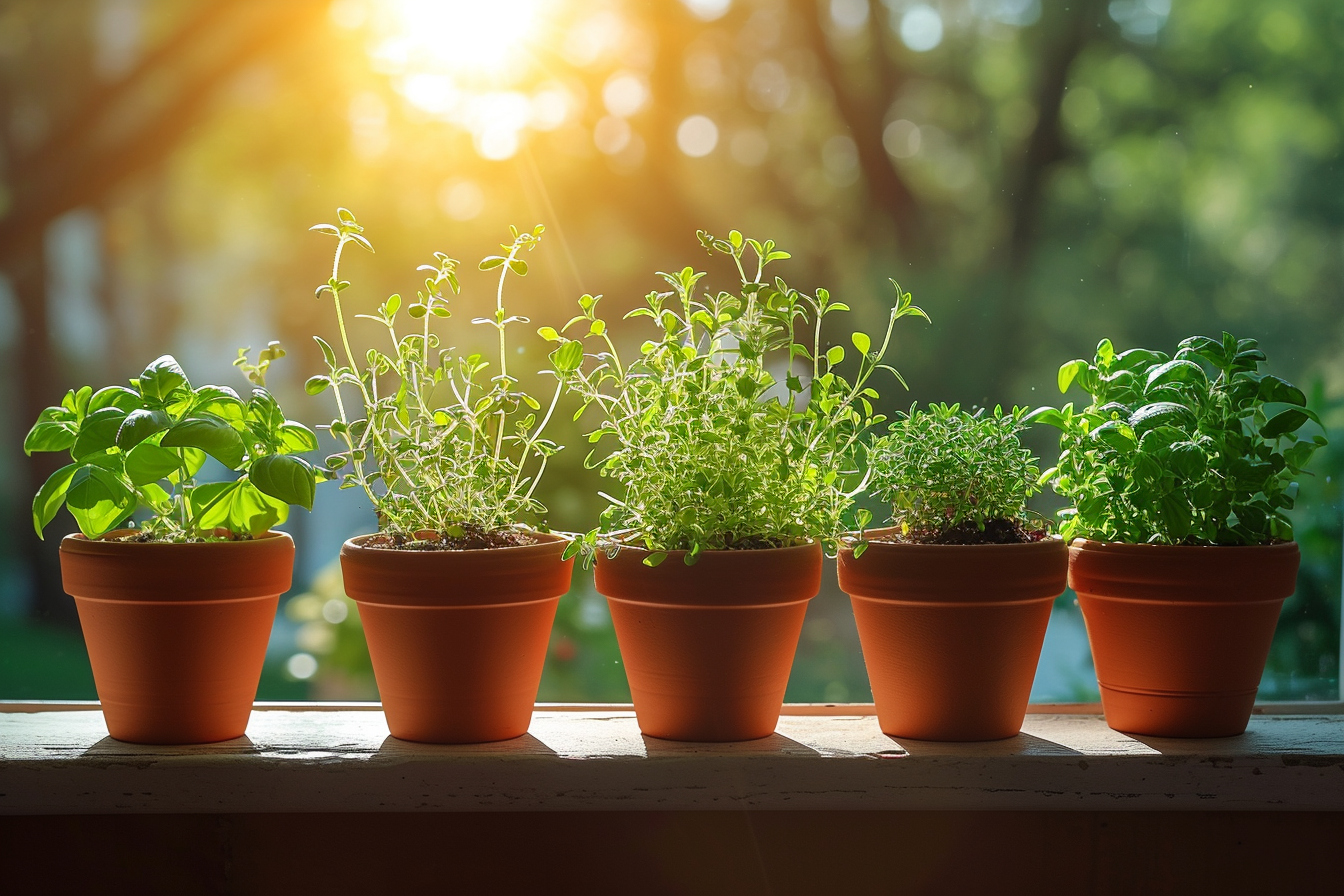Indoor gardening presents a remarkable opportunity for urban dwellers, culinary enthusiasts, and those seeking to enhance their living space with vibrant plant life. Specifically, cultivating miniature herb plants is not only aesthetically pleasing but practical for a multitude of uses, ranging from culinary applications to natural aromatic enhancement of indoor environments. With proper know-how, indoor herb gardens can become a delightful project that yields both satisfaction and harvest.
Understanding miniature herb plants
Before diving into the specifics of indoor gardening, it is essential to understand what constitutes a miniature herb plant. These are herbaceous species specifically cultivated to remain small in size, making them ideal for limited spaces such as kitchen windowsills, shelves, or small indoor gardens. Typical herbs that can be grown as miniature plants include basil, chives, parsley, mint, oregano, and thyme.
Their diminutive size should not undermine their potential; these small-scale herbs can be just as flavorful and beneficial as their full-sized counterparts.
Selecting the right herbs
When deciding on which herbs to grow indoors, consider the following:
- Space: Herbs should be chosen based on the amount of room available for them to grow.
- Light: Evaluate the light conditions of your space, as some herbs require more light than others.
- Use: Think about the herbs you commonly use in your cooking or for other purposes, as growing what you’ll use is more rewarding.
Starting with quality seeds or cuttings

Initiating your indoor herb garden can be done through seeds or cuttings. Both have their advantages – seed-grown plants can ensure a disease-free start while cuttings can give you a more immediate start to the plant’s development. Regardless of your choice, it’s imperative to source high-quality starting material to ensure robust growth.
Seed selection
Choose non-GMO, organic seeds from a reputable supplier. Look for varieties that are known to do well indoors and are disease-resistant.
cuttings
If using cuttings, select healthy parent plants and make clean cuts for the best chance of rooting success. Rooting hormones can be used to encourage growth, but is not a requirement for all herb types.
Optimal growing conditions
Creating an environment where miniature herb plants will thrive requires attention to several key factors:
light
- Intensity: Most herbs need at least six hours of bright light each day.
- Type: South-facing windows are typically ideal, but if natural light is insufficient, supplementary grow lights can provide the necessary spectrum of light needed for plant growth.
watering
Properly watering your herbs is critical for their development:
- Regularity: Water herbs when the top inch of soil feels dry to the touch, but avoid overwatering, which can lead to root rot.
- Quality: Use room temperature water; if using tap water, let it sit out for a day before using to allow chlorine to evaporate.
Soil and containers
The choice of soil and containers goes hand-in-hand with plant health:
- Soil: Use a high-quality potting mix designed for indoor plants, which will ensure proper aeration and drainage.
- Containers: Ensure pots have adequate drainage holes. Consider the size of the pot relative to the herb; overcrowding can stunt growth and promote disease.
Temperature and humidity
Maintain consistent temperature and humidity levels for optimal herb growth:
- Temperature: Most herbs favor temperatures between 65 and 75 degrees Fahrenheit.
- Humidity: Indoor air can be dry; use a humidifier or mist plants regularly to maintain moderate humidity levels.
Fertilization strategies
Herbs generally have moderate nutrient requirements; however, regular feeding will promote lush, healthy foliage. An organic liquid fertilizer specifically designed for edible plants can be used. Follow the manufacturer’s instructions for appropriate dosages and frequency.
Pruning and harvesting
Regular pruning maintains the shape of your miniature herb plants and encourages growth:
- Technique: Pinch back the tips of your herbs to promote bushier growth, and never remove more than one-third of the plant at a time.
Harvest leaves as needed, but be mindful not to deplete the entire plant. This gives the herb an opportunity to replenish and extend its lifespan.
Pest management
Pest management in an indoor setting can be particularly challenging due to the confined space:
- Prevention: Inspect new plants carefully before introducing them to your garden to avoid pests.
- Identification: Be vigilant in spotting early signs of infestation, such as discolored leaves or visible insects.
- Treatment: Employ natural pest control methods, such as insecticidal soaps or neem oil, which are safer for indoor use and won’t taint your herbs with chemicals.
Common challenges and solutions
Growing miniature herb plants indoors isn’t without its challenges, but with the right strategies, most issues can be overcome:
Lack of light
Challenge: Insufficient light can result in leggy, weak plants.
Solution: Invest in quality grow lights to supplement natural light, ensuring your herbs receive enough intensity and duration of light each day.
overwatering
Challenge: Overwatering is a common mistake that can lead to root rot.
Solution: Only water when necessary, and ensure your pots and soil provide proper drainage.
Limited space
Challenge: Growing indoors often means dealing with space constraints.
Solution: Select compact herb varieties, utilize vertical gardening techniques, or explore hydroponic systems to maximize space efficiency.
Slow growth
Challenge: Herbs may sometimes grow slowly or appear stunted.
Solution: Assess and adjust light, nutrients, or temperature as needed. Be patient, as some herbs take time to establish themselves before rapid growth occurs.
Advanced techniques: hydroponics and automation

For enthusiasts looking to take their indoor gardening to the next level, hydroponics and automation offer exciting possibilities:
hydroponics
This method for growing plants in a water-based, nutrient-rich solution bypasses the need for soil. It can increase growth rates and yields due to the plants’ roots having direct access to nutrients.
automation
Automated systems can manage light cycles, watering, and nutrient delivery, freeing you from daily maintenance and ensuring a more consistent growing environment.
Diving deeper: plant propagation
Expanding your indoor herb garden is made possible by mastering the art of plant propagation:
division
Some herbs, like chives, can be easily multiplied by dividing the root ball gently and replanting.
Stem cuttings
Many herbs can also be propagated by taking stem cuttings, rooting them in water or a light soil mix.
Each of these techniques can be rewarding and cost-effective, allowing gardeners to produce a steady supply of herbs from their existing plants.
Creating a sustainable indoor ecosystem
In the grander scheme of indoor gardening, sustainability plays a vital role:
composting
Implementing mini composting systems such as worm bins can provide a continuous supply of rich organic matter for your herbs.
Water conservation
Using self-watering pots or water-conserving substrates like coconut coir can help reduce water usage.
Biointensive methods
Employing biointensive gardening principles can maximize yields and encourage ecological balance within your indoor garden.
Connecting with a community
Joining a community of like-minded gardeners, whether online or locally, can provide support, share knowledge, and offer inspiration for your endeavors. Forums, social media groups, and local gardening clubs can be invaluable resources for troubleshooting and exchanging tips.
Continuous learning and adaptation
Indoor gardening is a continual journey of learning. Through patient observation and consistent care, you will become attuned to the unique needs and behaviors of your herbs. Adapt and adjust your methods according to plant responses, and consider maintaining a gardening journal to track your progress and insights.
As each plant flourishes under your attentive care, you’ll realize that the process of mastering indoor gardening is an ongoing endeavor. With time, your miniature herb garden will not only bring life to your indoor space but will also be a testament to the rewards of cultivating greenery in any environment.

Leave a Reply